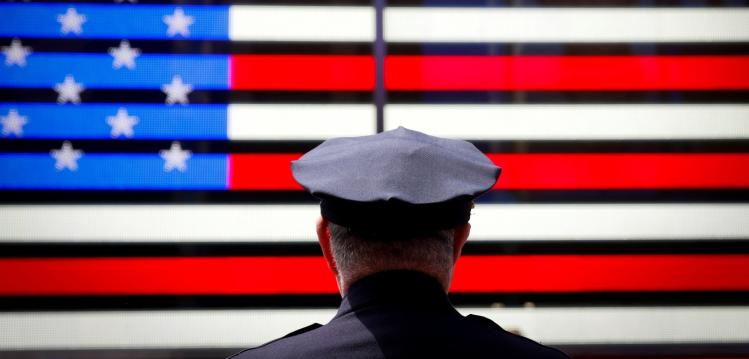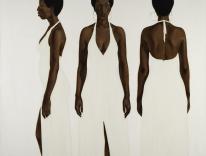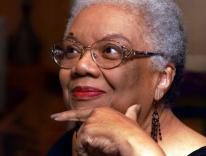
In January, New York City’s mayoral primary election looked as if it were going to sink into the pandemic fog. In March, rumors of the new ranked voting system and multiple candidates began to seep into the news. In April, the pandemic started to fade, and mailboxes began to fill with outsized postcards promoting someone you had never heard of. (Thirteen candidates had qualified for the Democratic primary; two for the Republican). What finally got headlines and seemed to galvanize the attention of voters, though, was a series of shootings, including one in Times Square. These were said to signal a “crime wave” in the city—and the election campaign finally took off.
There were calls to “defund the police,” still reverberating from last year’s George Floyd protests, but now there were also calls to get tougher on crime. New Yorkers who had seen their neighborhoods flooded by a wave of gun violence during the pandemic had to recalculate the consequences of a reduced police presence. It should not have been a surprise, then, that the winning Democratic mayoral candidate was a former cop. Brooklyn Borough President Eric Adams had served for twenty-two years in the NYPD and retired as a police captain. During the primary campaign, Adams, an African American, described being beaten and arrested by police as a kid growing up in Queens. He said he joined the police force to change it from within. During the campaign, he called for reforming, but not defunding, the police.
Meanwhile, here on the Upper West Side of Manhattan, my book group had been reading Rosa Brooks’s Tangled Up in Blue: Policing the American City, about the Washington D.C. police force. When we finally met on Zoom after the election, we were primed to see the way that New York’s policing debate mirrored the story Brooks tells about her stint in the D.C. Metropolitan Police Force (MPF). Someone in my group called the book “a page-turner”; someone else described policing as “an impossible job,” and another called it “a thankless task.” I had no idea how the people in my book group had voted in our deeply blue district, but Brooks’s account of the complex and contradictory nature of policing had raised questions not only about defunding but also what it might take to actually reform the police.
Brooks, a law professor, has worked at the Pentagon, advised the State Department, and done work in the field of human rights. She has long been interested in violence and the rule of law. In 2015, while on sabbatical from Georgetown Law School, she decided to study the militarization of policing and applied to join D.C.’s reserve (voluntary) police force. Tangled Up in Blue is an account of that experience, interwoven with the story of her decision to join the police, her social-activist mother’s strong opposition, and ultimately her attempt to help change the way policing is done in D.C.
D.C. reserve officers, unlike reserve officers elsewhere, receive the same training and are subject to the same standards and rules as the regulars. They have the same authority to investigate, charge, and arrest. Brooks carries a gun, wears a bulletproof vest, lugs around thirty pounds of equipment, and writes arrest reports, along with doing other administrative tasks. In 2016, after six months of classroom instruction, role-playing, firearms practice, and physical training, Brooks was sworn in and required to serve four hundred and eighty hours of patrolling in order to be certified as a member of the reserves.
She gives a lively account of the training: classes covering law enforcement from A to Z, and from 1791 (death of a New York sheriff) to 9/11 (“modern policing at its best”); grizzled, grumpy, and sexist instructors; former cops wanting to keep their hand in; grimy assembly rooms and bathrooms; outdated and broken equipment. As she describes this real-life adventure, Brooks shrewdly notes the oddities and shortcomings of the training she received. The bottom line of policing is “situational awareness,” which translates to “anyone can kill you anytime.” Therefore, watch your back, keep your distance, don’t question suspects in the kitchen (they could grab a knife). Trainees sit through hours of “safety films” that show officers being killed or maimed; these are meant to instill in rookies the importance of self-protection. Brooks thinks the dominance of this theme during training produces behaviors that would likely shock ordinary citizens. New officers are taught to take command of a situation by adopting a military stance and shouting “back down,” as they enforce the plethora of rules, regulations, and laws on the books in D.C., most of them misdemeanors. The use of force may be strictly regulated, but policing focused on “officer safety” can quickly default to the strongest possible response—including the chokehold or reaching for a gun.
Brooks shows how this training, reinforced by internal protocols and the larger legal framework, encourages officers to be on guard against the very people they are meant to protect. It also dissuades them from acknowledging their mistakes or bad decisions. (The instructors warn Brooks and the other trainees that their superiors “will hang them out to dry.”) All this helps explain the power of police unions and the insularity of police departments: cops have to take care of their own. No one else will.
The self-protective strategies of police culture, like those of doctors and the clergy, keep critics at bay and raise already-high barriers against reform. To add to the conundrum, Brooks reports that in her training there was no discussion of larger issues affecting how the police relate to the public. Race and police violence, for example, never came up, even though about half of D.C. police recruits are Black. Nor was there any mention of the ongoing national debate about police reform.
Brooks began patrolling in 2016 with full-time officers assigned to D.C.’s Police District 7, the busiest, poorest, and most violent in the city. She describes the everyday practices and expectations of the D.C. police force. We read about the various incidents she must confront and the people she encounters while on patrol. There is a lot of ordinary human suffering mixed in with the crimes. No wonder readers may come away from the book with the impression that policing is “an impossible job” and “a thankless task.” Our society leaves to the police every kind of trouble that families, neighbors, store owners, or passersby won’t or can’t manage. 911 is the all-purpose number for what some of Brooks’s fellow officers term “shit calls.”
Still, the complaints get answered, many of the conflicts are peacefully resolved, and some encounters between the police and the public are positive and affirming. A child in a mental-health crisis and without medication gets driven in a patrol car to the hospital at a mother’s request; the children in an abusive household convince their mother to dump her boyfriend while the police stand by to help; older people, lost and confused, are brought home; a bully is warned away from harassing people and moves on. Crimes are solved.
But Brooks sees a downside to “successful policing”—the apprehension of people who have committed crimes and will go on to serve time in prison: over-incarceration and long sentences, she argues, leave a family without a mother or a father, and only increase the distress in poor communities. Rather than remedy this distress, society puts in place forces to contain it. On one of her first calls, Brooks finds a man lying on the ground with a gunshot wound. Her partner asks, “Who did this? Help me get him.” The victim hedges, claiming, “Oh, I think it must have been an accident.” Her partner has already dealt with this man several times—for stealing candy bars, beating his girlfriend, fighting, selling drugs in front of a school. This kind of scenario helps explain the corrosive cynicism of many cops. Brooks argues that efforts to promote “positive policing” are hampered not only by racism but by problems related to class. Black cops, she finds, are hardly more sympathetic—sometimes less sympathetic—than their white counterparts to the poor people they police.
In District 7, which has the highest homicide rate in D.C., any effort to promote better policing must deal with poverty, stress, broken families, drugs, adolescent bullying, homelessness, not to mention actual crimes. The effect of all this is to leave many police officers feeling demoralized and discouraged.
But in the end Brooks’s own time on the beat didn’t dishearten her. She didn’t just write a book about her own experiences. She also persuaded Georgetown Law to start the Police for Tomorrow Program, which is open to MPD officers and civilians. Students receive intensive monthly workshops on critical policing topics: race and policing, implicit bias, poverty and crime, D.C.’s changing demographics, the impact of gentrification on policing, mental illness, and every other issue that Brooks encountered during her time as a reserve officer. In the book’s epilogue and appendix, she offers a general assessment of the problems confronting the D.C. police, follows up with people she encountered in District 7, and provides reports on the Georgetown program.
Brooks is no ordinary “do-gooder.” Her decision to join the D.C. reserve police force is a twist on a left-wing upbringing. When she announced her decision to join the police, she had to contend with objections from her own children and husband, as well as from her mother, the social activist and journalist Barbara Ehrenreich. Brooks is reminded that in the late 1960s, at an anti-war protest, Ehrenreich “was tear-gassed by police trying to break up the crowd…. She was pregnant with me, her first child. I’ve heard her tell this story many times and usually she offers, as a coda, the reminder that I was tear-gassed while still in utero (‘Which explains a lot,’ [Ehrenreich] usually quips).”
In the sterile polarization of our politics, Black Lives Matter and Blue Lives Matter have been set in angry opposition to one another. But Rosa Brooks’s book reveals the rare individual who, by upbringing and career, is able to comprehend both.
Tangled Up in Blue
Policing the American City
Rosa Brooks
Penguin
$28 | 367 pp.
Please email comments to [email protected] and join the conversation on our Facebook page.
Share
Previous Story
‘Barbed-Wire Sunday’
Next Story
Shaman & Scapegoat

